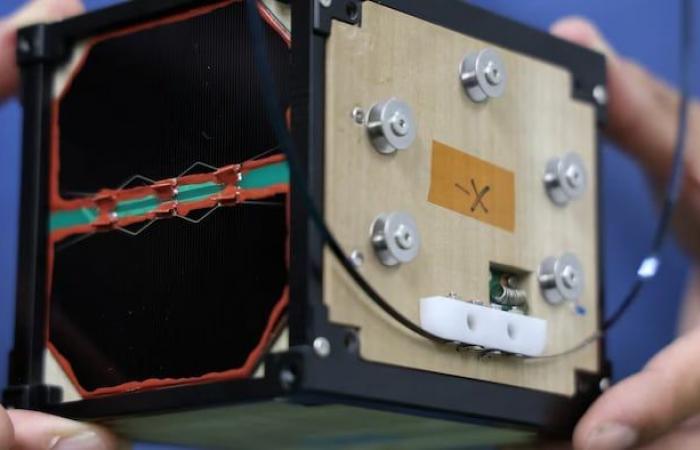Japanese scientists launched the first wooden satellite into space on November 5. They want to test the resistance of wood as a renewable construction material for the exploration of the Moon or Mars.
Made from the wood of a magnolia tree, the palm-sized LignoSat was developed by Kyoto University and construction company Sumitomo Forestry.
It will be transported to the International Space Station aboard a SpaceX mission, then put into orbit about 400 km above Earth next month.
Open in full screen mode
Once deployed, LignoSat will remain in orbit for six months. The onboard electronic components will measure the resistance of wood to the extreme environment of space.
Photo : Reuters / Irene Wang
Aaron Boley, co-director of the Outer Space Institute in Vancouver, said LignoSat could show that wood is a more sustainable alternative to commonly used materials.
He said wood would be less polluting than most satellites, which are designed to burn up in the atmosphere at the end of their lifespan, depositing materials into the atmosphere that could be harmful.
The observation planned by the LignoSat project:
- Resistance of wood to temperatures which fluctuate from -100 to 100°C every 45 minutes (transition from darkness to sunlight)
- The ability of wood to reduce the effect of space radiation on semiconductors
From satellites to extra-terrestrial homes
Aaron Boley believes it is important to test the strength of natural materials in space, with a view to long-term human habitation elsewhere than on Earth.
Stavros Avramidis, director of the wood sciences department at the University of British Columbia (UBC), highlights that wood is naturally insulating and allows better control of temperature and humidity than other materials such as metal or concrete.
Building structures to house people for long periods of time is a goal that could be achieved using wood.
According to Stavros Avramidis, the main challenge engineers could face would be the decay of wood from radiation, such as the powerful X-rays and gamma rays emitted by the sun.
When announcing this wooden satellite project, Aaron Boley recalled that, despite the potential reduction in pollution when satellites burn in the atmosphere, they must nevertheless be placed in orbit. According to him, rocket exhaust impacts global climate by warming the stratosphere where the ozone layer is found
.
With information from Michelle Gomez and Reuters






